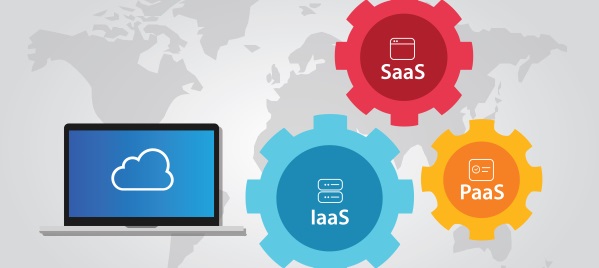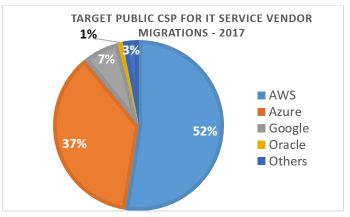posted on Apr 20, 2018 by NelsonHall Analyst

Over the last several years, the public IaaS market has grown rapidly, with major public IaaS providers growing at 45% or more annually, as estimated by NelsonHall. However, large enterprises are only moving a small portion of their application landscapes to public cloud, maintaining larger application footprints in private cloud or on-premise environments.
This hybrid approach reflects an unwillingness to treat all workloads across their application landscape alike. The applications being migrated to public IaaS providers have frequently been non-production, disaster recovery, or non-critical workloads, as well as external-facing applications with significant fluctuations in demand.
However, as public cloud offerings mature, the migration of enterprise workloads to public IaaS has grown, both in quantity and business criticality. And, similar to the overall public IaaS market, the largest target for enterprise application migrations supported by IT service vendors has been AWS.
NelsonHall estimates that, in 2017, client migrations by IT service vendors to public cloud providers were in the following proportions:

While AWS maintains a dominant position in the overall public IaaS market, when it comes to large enterprises migrating their existing application landscapes to public IaaS, AWS is potentially vulnerable to losing market share to competitors. Much of this is driven by competitors’ growing capabilities, but another factor is AWS’s parent, Amazon.
Competitive threats
A tougher competitive environment could reduce AWS’ position as the default option for public IaaS. Some specific competitive threats include:
- Microsoft Azure, the second largest public IaaS provider, launched its Azure Stack offering in mid-2017. Azure Stack targets clients looking for a hybrid cloud, as most large enterprises are. Azure Stack offers paired public and private IaaS and PaaS offerings so that workloads can be moved between public and private environments with minimal modifications, and a common set of tools can manage applications across both
- Google Cloud Platform, which has undergone a major drive to grow its public cloud presence. Recent wins at Shopify, Williams-Sonoma and Home Depot reflect Google’s increasing clout in enterprise public IaaS
- Oracle, which was also slow to offer IaaS but is expanding its focus in this area. With a large footprint of clients with Oracle business applications that can be addressed, Oracle has an opportunity to grow rapidly.
However, these challenges might not impact AWS nearly as much as AWS’ parent itself.
Amazon’s impact
With Amazon’s dominant presence in retail and publishing, and its growing presence in media and entertainment, other companies in these industries don’t want to help fund their own competition – and these companies are increasingly looking to alternative cloud service providers (CSPs). IT service vendors are seeing a rise in companies either looking to migrate to other CSPs as alternatives to AWS, or even moving early-migrated workloads off AWS due to the competitive position of Amazon. As noted above, three of Google’s highest profile recent wins are all retail organizations.
This interest in alternatives to AWS by their clients is driving IT service vendors to expand their relationships with other public IaaS providers. For example:
- Oracle: Infosys has developed end-to-end Oracle Cloud offerings spanning SaaS, IaaS, PaaS and lift-and-shift for on-premise legacy applications. Also, LTI is focusing on building out a suite of offerings for Oracle Cloud
- Google: While nearly all IT service providers possess a strategic partnership with Google, TCS has a strategic relationship with Google driven by CEO-level engagement, and estimates it has delivered services on Google Cloud platform for ~35 clients. Also, EPAM has used its relationship as service provider to Google itself to develop Google Cloud offerings.
Summary
AWS appears poised to continue to dominate the overall public IaaS cloud market. However, when it comes to large enterprise application migrations, AWS is facing increasing threats, including those driven by its own broad business footprint.
